Key takeaways
- Community leaders serve as a vital link between local concerns and broader policy decisions, emphasizing the importance of listening and building trust.
- Authenticity in campaigns is enhanced when community leaders translate party values into relatable issues that resonate with families.
- Initial outreach should focus on genuine interest and relationship-building rather than political agendas, fostering trust through consistent engagement.
- Collaboration with community leaders on initiatives leads to more effective campaign strategies and deeper commitment, rooted in a shared vision.
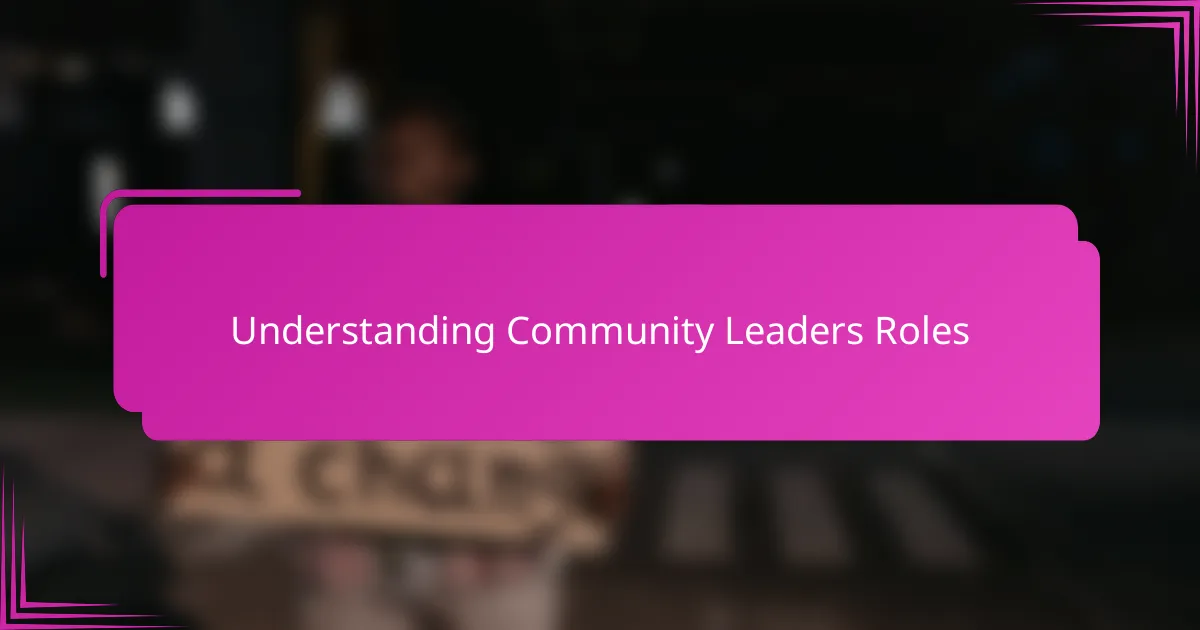
Understanding Community Leaders Roles
Community leaders hold unique roles that often extend beyond formal titles. From my experience, they serve as the bridge between everyday concerns and larger policy decisions, shaping how political campaigns resonate locally. Have you ever wondered how one person’s voice can ripple through an entire neighborhood? That’s exactly the influence these leaders possess.
What struck me most was realizing their commitment runs deep—they listen, advocate, and often sacrifice personal time to foster trust within their communities. It’s not just about leading; it’s about truly understanding diverse perspectives and finding common ground. This emotional connection is what transforms leadership into genuine service.
I’ve learned that appreciating these roles requires more than surface-level recognition. When you see community leaders as the heart of grassroots efforts, it becomes clear why campaigns must engage with them sincerely. Without that understanding, any attempt at building support feels hollow and disconnected.
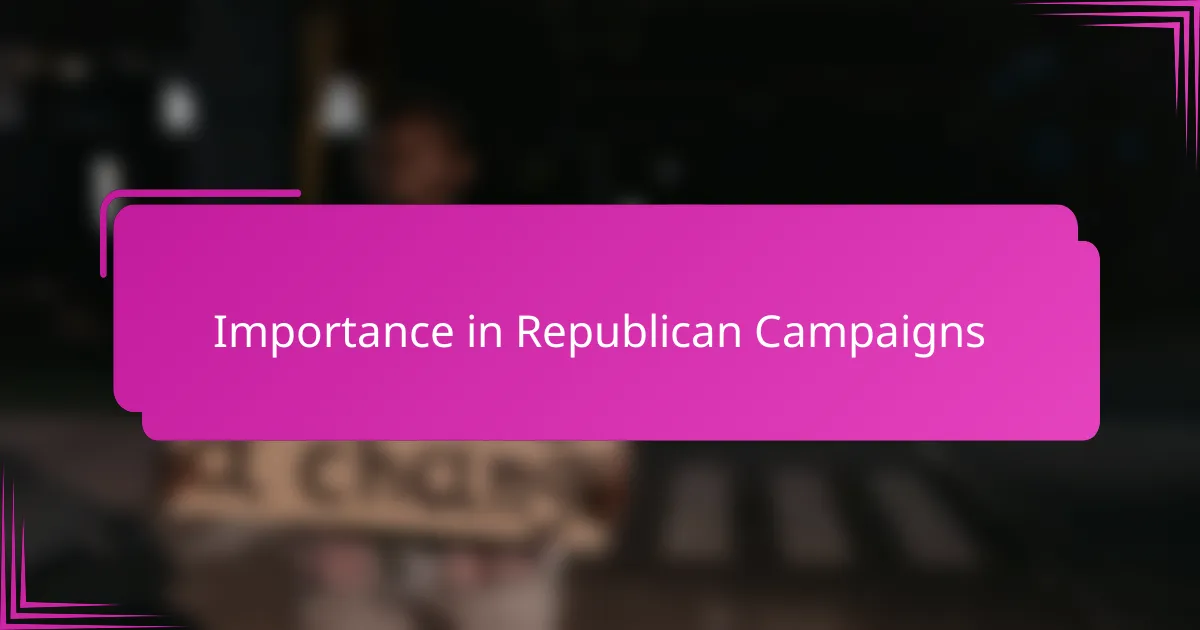
Importance in Republican Campaigns
In Republican campaigns, community leaders are more than just allies—they’re the pulse of the neighborhoods we aim to serve. From my experience, when I took time to listen to their concerns, campaign messages started to feel more authentic and impactful. Have you ever noticed how a well-placed conversation with a trusted local figure can suddenly open doors that seemed firmly shut?
What really resonated with me was seeing how these leaders help translate broad party values into relatable, everyday issues. It’s one thing to talk about economic growth or national security, but when a community leader connects those ideas to a family’s real struggles, the campaign becomes meaningful. That emotional bridge can’t be underestimated—it’s where trust and votes are born.
I’ve also learned that this connection isn’t just strategic; it’s personal. Building relationships with community leaders often meant sharing stories, sitting through tough discussions, and showing genuine respect. Those moments revealed to me why Republican campaigns that overlook this vital step risk losing credibility and momentum at the grassroots level.
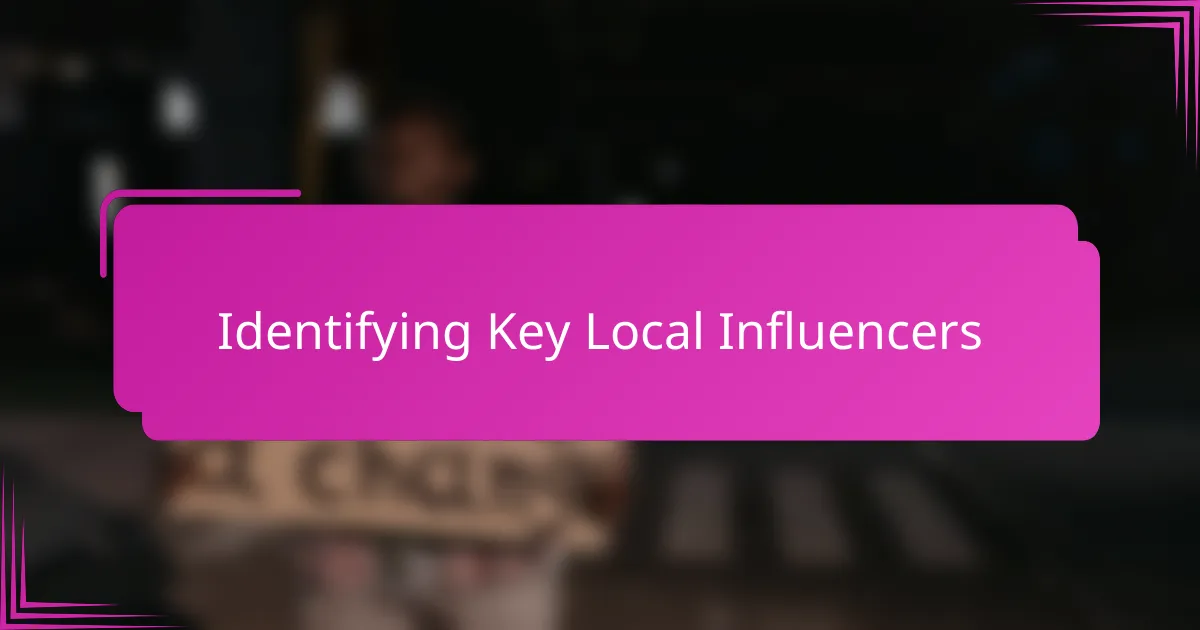
Identifying Key Local Influencers
Identifying who truly influences a community isn’t always straightforward. Early on, I found myself asking, “Who do people actually listen to when decisions are made?” Sometimes it wasn’t the obvious elected official but a local pastor, a longtime business owner, or even a volunteer organizer quietly shaping opinions behind the scenes.
What helped me most was paying attention to where conversations naturally gathered—whether at [censured] meetings, school events, or neighborhood gatherings. One time, I followed a lead to a small diner where locals shared their concerns, and it turned out the owner was the real gatekeeper of community sentiment. Recognizing these informal influencers changed how I approached outreach entirely.
I’ve realized that a key local influencer isn’t defined by title but by trust and presence. When they speak, people listen because they’ve earned that respect over time. Hasn’t it happened to you that one trusted voice can calm fears or inspire action far more than any official statement? In campaigns, tapping into that trust can make all the difference.
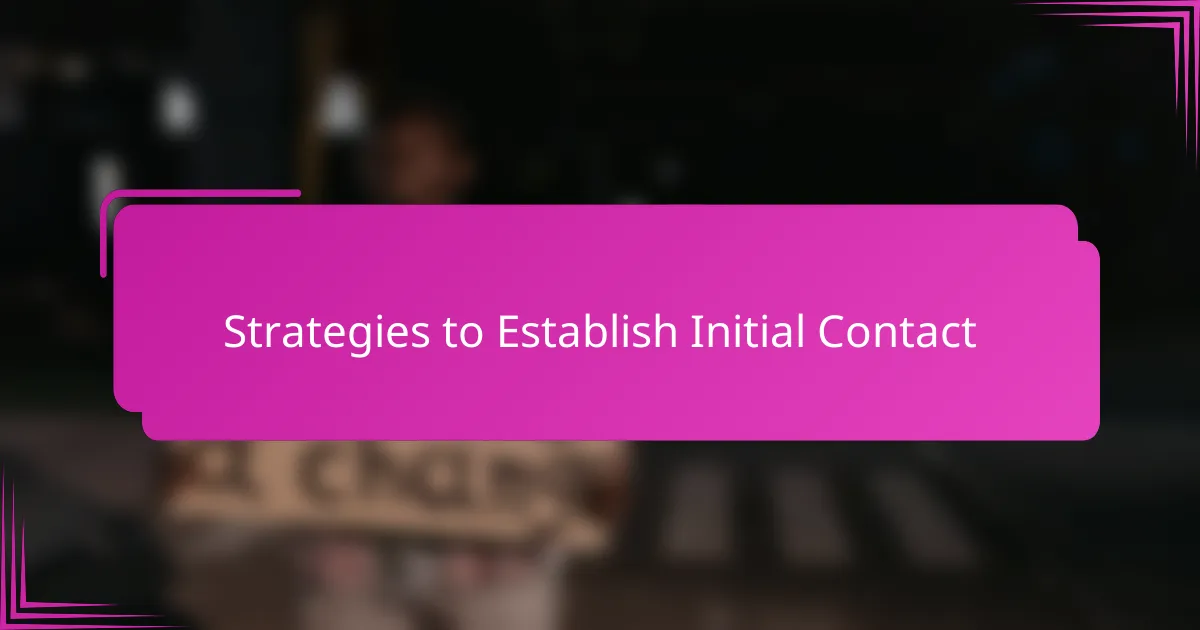
Strategies to Establish Initial Contact
Making that first connection with community leaders often felt like stepping into unfamiliar territory. I remember calling a local [censured] to introduce myself and, instead of diving straight into politics, I simply asked about their recent community events. That small gesture opened the door to a heartfelt conversation, showing me that genuine interest beats scripted pitches every time.
Another strategy I found effective was attending public gatherings without an agenda. Just showing up at town hall meetings or charity drives allowed me to observe and engage organically. Have you ever noticed how people warm up when they sense you’re there to listen, not just to talk? Those moments built the foundation for meaningful relationships.
In some cases, a mutual connection made all the difference. I once reached out to a business owner through a common acquaintance, which instantly created trust. It made me realize how powerful personal introductions can be—they remove barriers and make the initial contact feel less like a strategy and more like a natural meeting between neighbors.
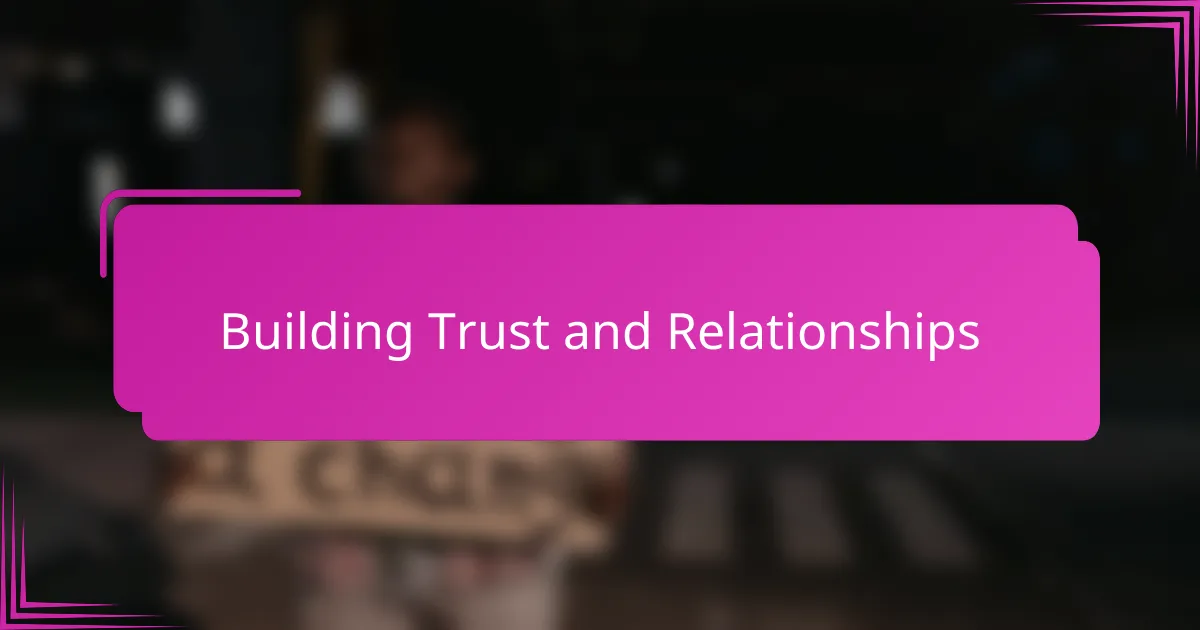
Building Trust and Relationships
Building trust didn’t happen overnight; it required consistency and showing up—even when there was no immediate benefit. I found that when I followed through on small promises and listened more than I spoke, community leaders began to view me as someone dependable rather than just another campaign face.
Have you ever experienced how trust grows from shared vulnerability? Opening up about my own challenges helped bridge gaps, creating a space where leaders felt comfortable sharing their concerns too. Those moments of honest dialogue laid the groundwork for deeper relationships rooted in mutual respect.
It became clear to me that relationships aren’t one-directional—they thrive on reciprocity. I made it a point to support local initiatives and attend community events beyond just campaign needs. That genuine investment showed leaders that I wasn’t there solely for votes but to build lasting partnerships.
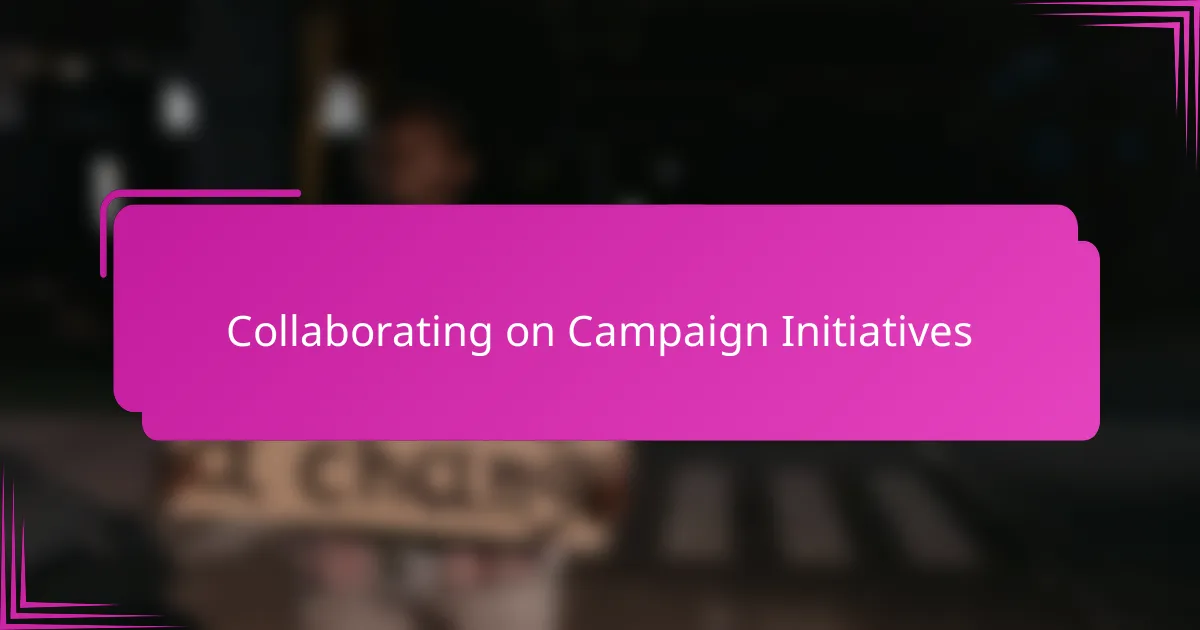
Collaborating on Campaign Initiatives
Collaborating on campaign initiatives with community leaders transformed my approach from merely delivering messages to co-creating them. When I invited leaders to brainstorm on event themes and outreach methods, their ideas brought an authenticity I couldn’t have achieved alone. Have you ever felt the energy shift when a local leader champions your work? That shared ownership makes all the difference.
One instance that stands out was a joint voter registration drive where the leaders’ knowledge of residents’ schedules and preferences helped us pick the most effective times and locations. Their input wasn’t just practical; it showed me how much campaigns succeed when grounded in real community rhythms. This collaboration turned routine tasks into community celebrations.
I’ve also seen how aligning on shared goals fosters deeper commitment. When leaders see their values reflected in campaign actions, their enthusiasm becomes contagious. How often do you find genuine excitement lighting up a room? That’s what happens when campaign initiatives emerge from true partnerships rather than top-down directives.
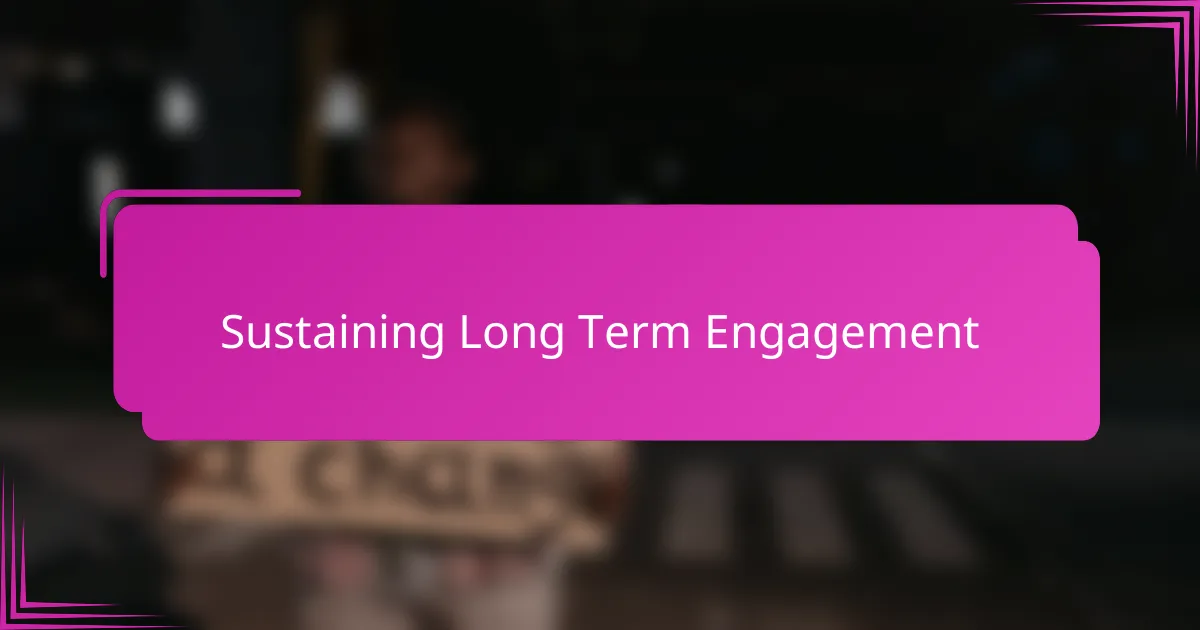
Sustaining Long Term Engagement
Sustaining long-term engagement with community leaders isn’t about the big gestures but the small, consistent actions that show you genuinely care. I’ve noticed that regularly checking in—even without asking for anything—builds a rhythm of trust that feels natural rather than transactional. Have you tried simply dropping a quick note or attending a local event repeatedly? Those moments add up and say, “I’m here for the long haul.”
One thing I’ve learned is that energy can fade quickly if communication becomes one-sided or infrequent. It’s like watering a plant—you can’t just pour in all the water at once and expect it to thrive; steady attention matters. I made it a habit to celebrate small wins with leaders, whether it was a successful fundraiser or a community cleanup, making sure they knew their efforts didn’t go unnoticed. That kind of shared celebration rekindled enthusiasm and reinforced partnership.
Sometimes, sustaining engagement means adapting to changing priorities within the community. I’ve found that staying flexible and openly asking leaders what matters most now—not what mattered months ago—keeps the relationship relevant. Isn’t it true that people value being heard about their current challenges? This ongoing dialogue is what transforms a one-time connection into a lasting alliance.